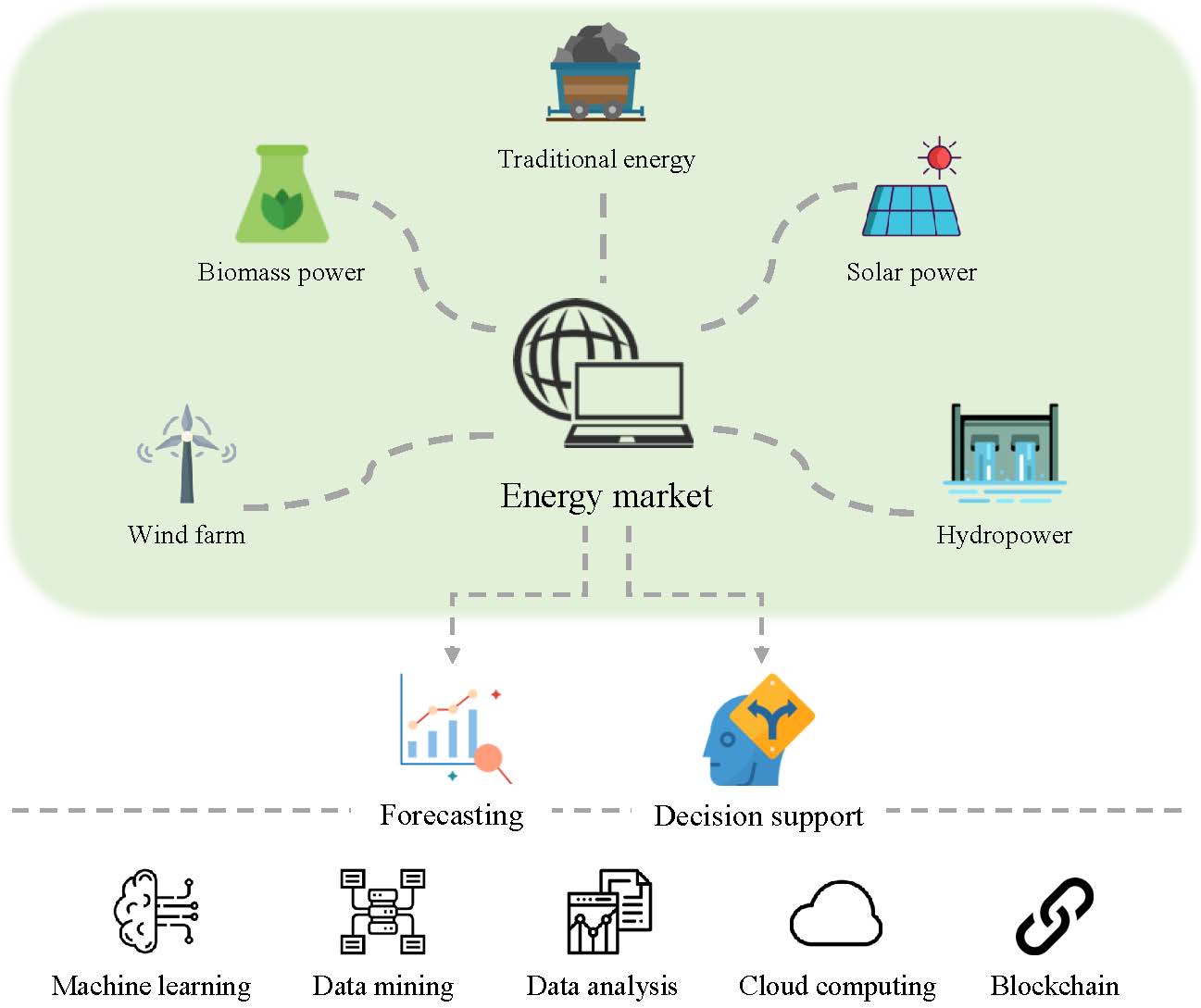Forecasting and Decision Support Systems for Energy Market Development
A special issue of Energies (ISSN 1996-1073).
Deadline for manuscript submissions: closed (20 September 2022) | Viewed by 32470

Special Issue Editors
Interests: business intelligence; big data mining; decision support systems; energy forecasting; financial management
Special Issues, Collections and Topics in MDPI journals
Interests: Industry 4.0; intelligent transportation systems and logistics; big data analytics
Special Issues, Collections and Topics in MDPI journals
Special Issue Information
Dear Colleagues,
In recent years, the double problems of energy shortage and environment deterioration have shaped the energy market, which has taken an increasingly predominant part in the global economic system and begun to exhibit more and more uncertainty, complexities, and chaotic traits. Meanwhile, rapid advances in computing technology and significant growth in Internet access have supported forecasting and decision making for the energy market. The emergence of a series of artificial intelligence and machine learning technologies provides more possibilities for prediction and decision making in global energy markets.
Recent research into forecasting and decision support systems has both provided optimal plans and also ensured the environmentally friendly and sustainable operation of the energy market. The rapid development of many emerging technologies, such as artificial intelligence, machine learning, big data computing, cloud computing, and blockchain, has laid the technical foundation for energy forecasting. Accurate prediction results enable managers to make optimal and efficient decisions.
Based on the above, this Special Issue calls for papers broadly related to forecasting and decision support systems, especially for energy market development. Recent theoretical and methodological advancements, case studies, applications, technical contributions, and applications of tools and techniques to improve forecasting and decision making for energy market development are all welcomed. Specific topics of interest include but are not limited to the following:
- Smart energy market
- Energy modeling and simulation
- Energy security, climate change and sustainability
- Effective energy market efficiency measurement
- Evaluation of energy market operation efficiency
- Big data analysis in energy market
- Intelligent forecasting and decision for energy market
- Energy market timing and forecasting
- Energy factor identification and optimization
- Energy market anomalies and inefficiencies
- Energy risk management
- Energy logistics and supply chain optimization

Prof. Dr. Lean Yu
Prof. Dr. Xiaofeng Xu
Guest Editor
Manuscript Submission Information
Manuscripts should be submitted online at www.mdpi.com by registering and logging in to this website. Once you are registered, click here to go to the submission form. Manuscripts can be submitted until the deadline. All submissions that pass pre-check are peer-reviewed. Accepted papers will be published continuously in the journal (as soon as accepted) and will be listed together on the special issue website. Research articles, review articles as well as short communications are invited. For planned papers, a title and short abstract (about 100 words) can be sent to the Editorial Office for announcement on this website.
Submitted manuscripts should not have been published previously, nor be under consideration for publication elsewhere (except conference proceedings papers). All manuscripts are thoroughly refereed through a single-blind peer-review process. A guide for authors and other relevant information for submission of manuscripts is available on the Instructions for Authors page. Energies is an international peer-reviewed open access semimonthly journal published by MDPI.
Please visit the Instructions for Authors page before submitting a manuscript. The Article Processing Charge (APC) for publication in this open access journal is 2600 CHF (Swiss Francs). Submitted papers should be well formatted and use good English. Authors may use MDPI's English editing service prior to publication or during author revisions.
Keywords
- Energy market
- Smart energy market
- Decision support systems
- Forecasting
- Big data analytics
Benefits of Publishing in a Special Issue
- Ease of navigation: Grouping papers by topic helps scholars navigate broad scope journals more efficiently.
- Greater discoverability: Special Issues support the reach and impact of scientific research. Articles in Special Issues are more discoverable and cited more frequently.
- Expansion of research network: Special Issues facilitate connections among authors, fostering scientific collaborations.
- External promotion: Articles in Special Issues are often promoted through the journal's social media, increasing their visibility.
- e-Book format: Special Issues with more than 10 articles can be published as dedicated e-books, ensuring wide and rapid dissemination.
Further information on MDPI's Special Issue polices can be found here.






